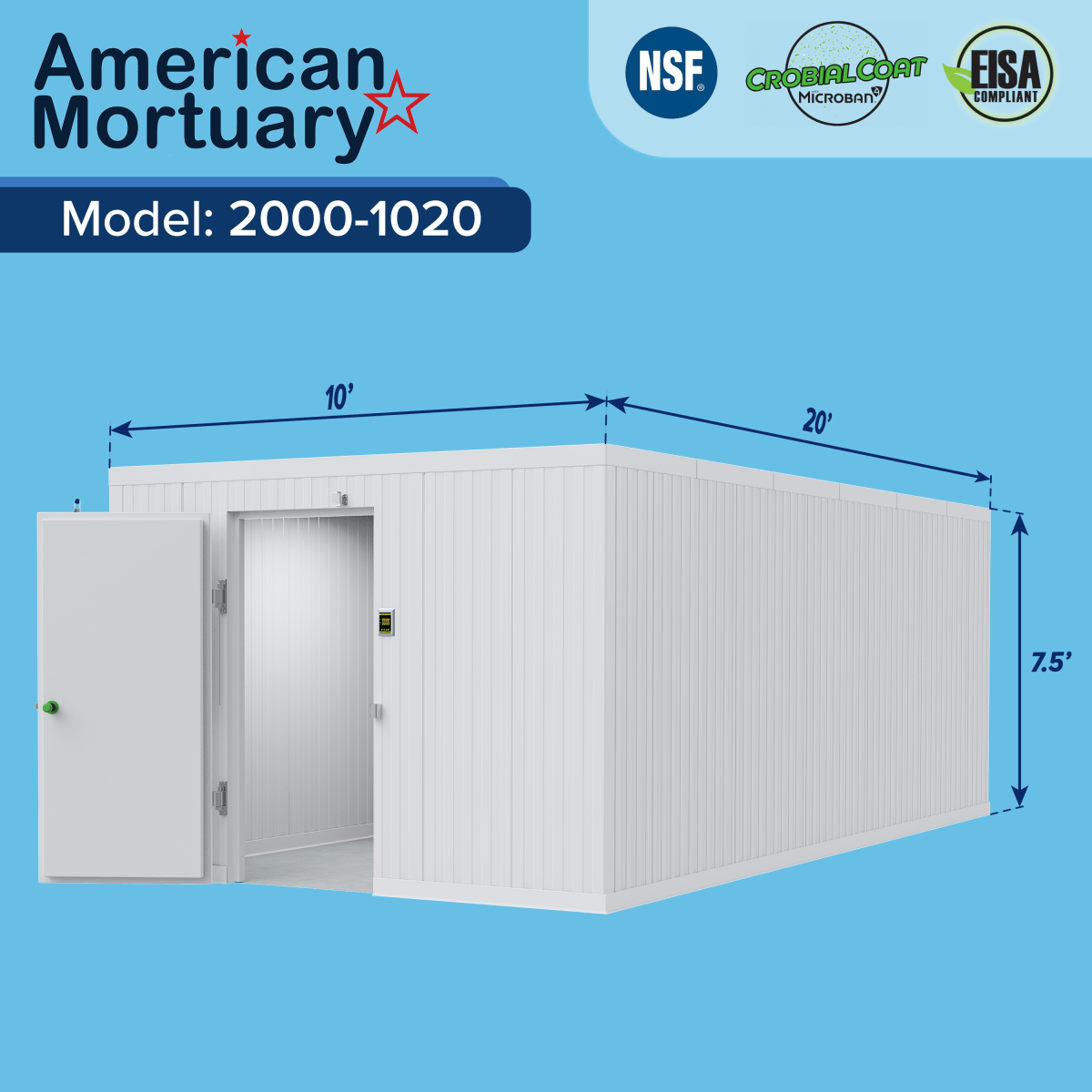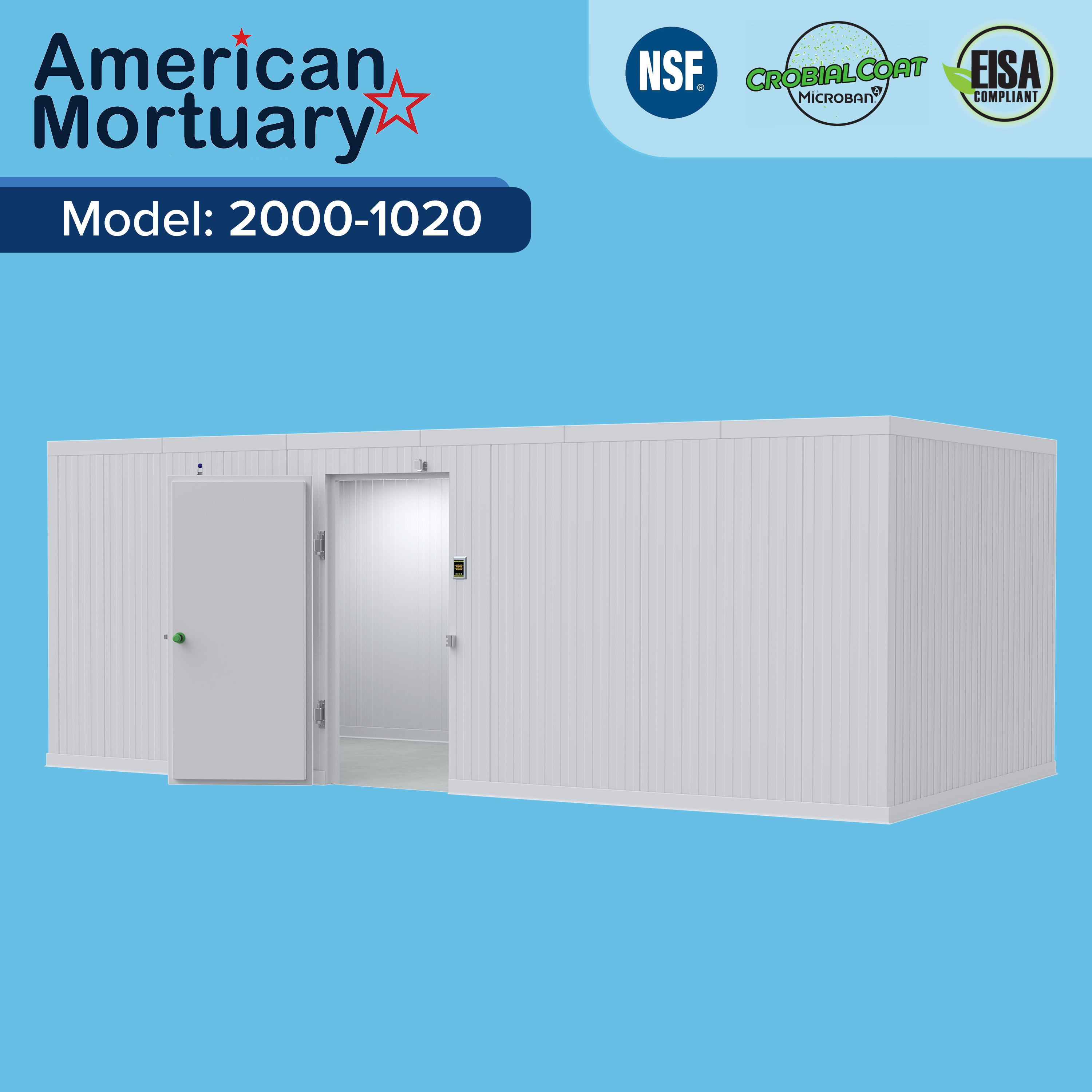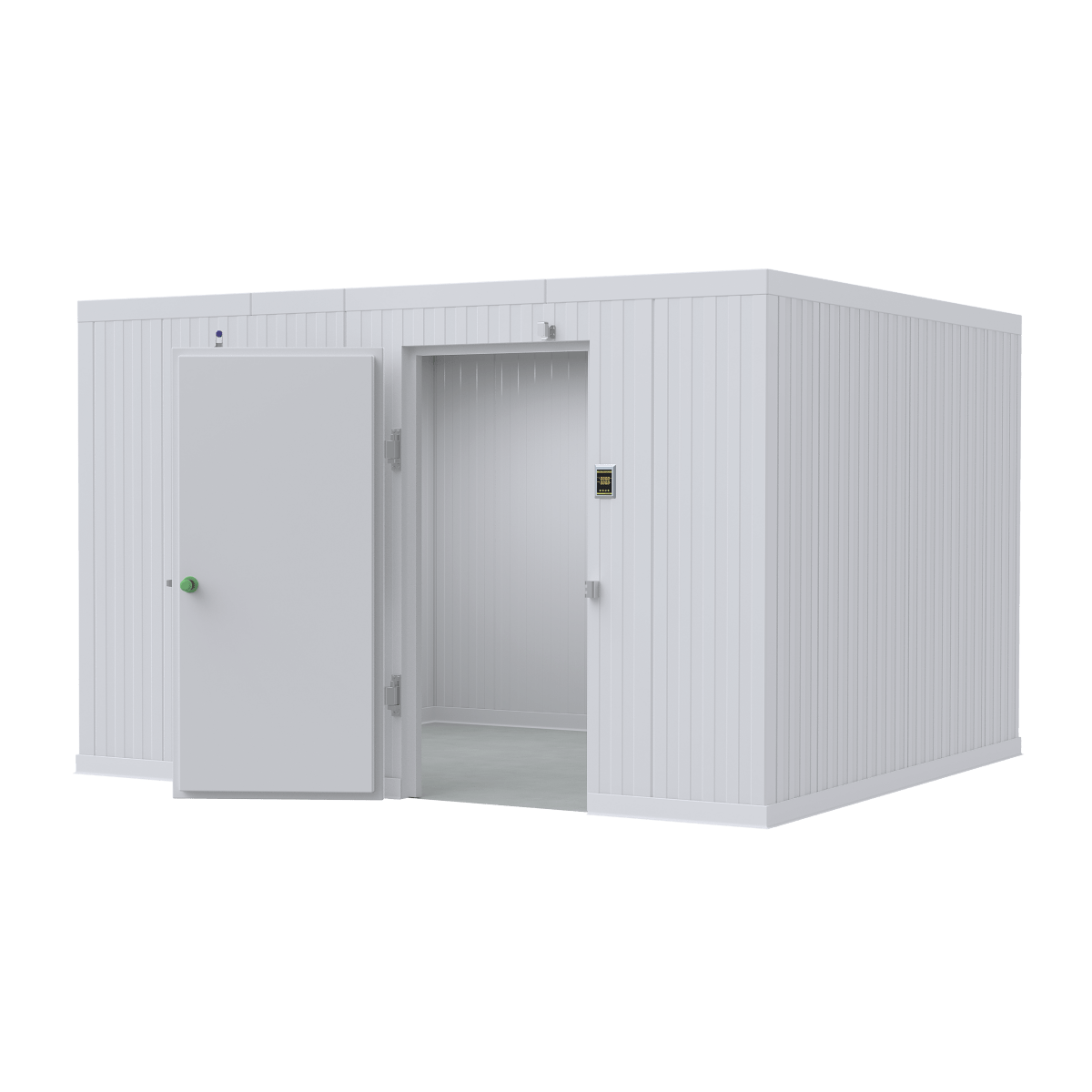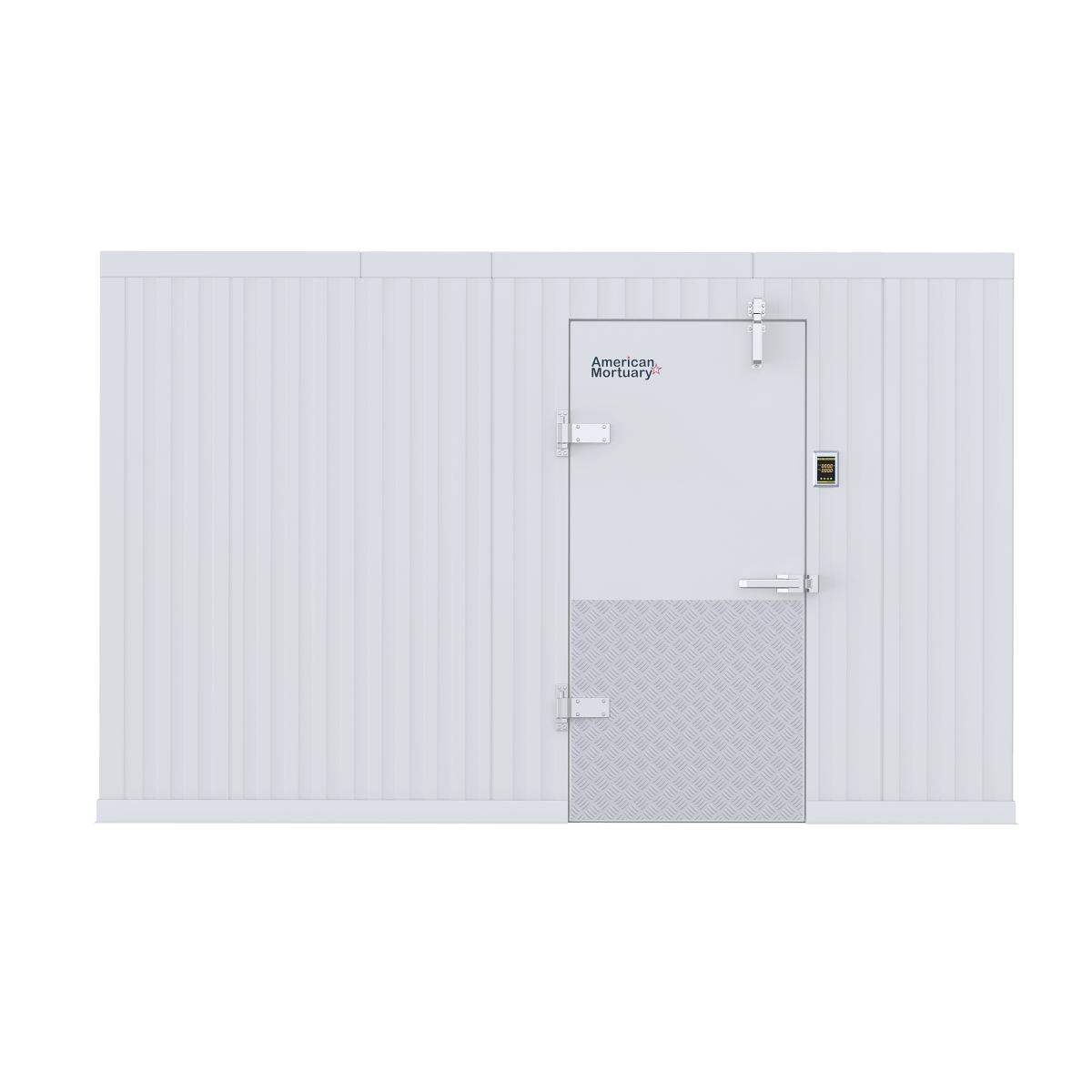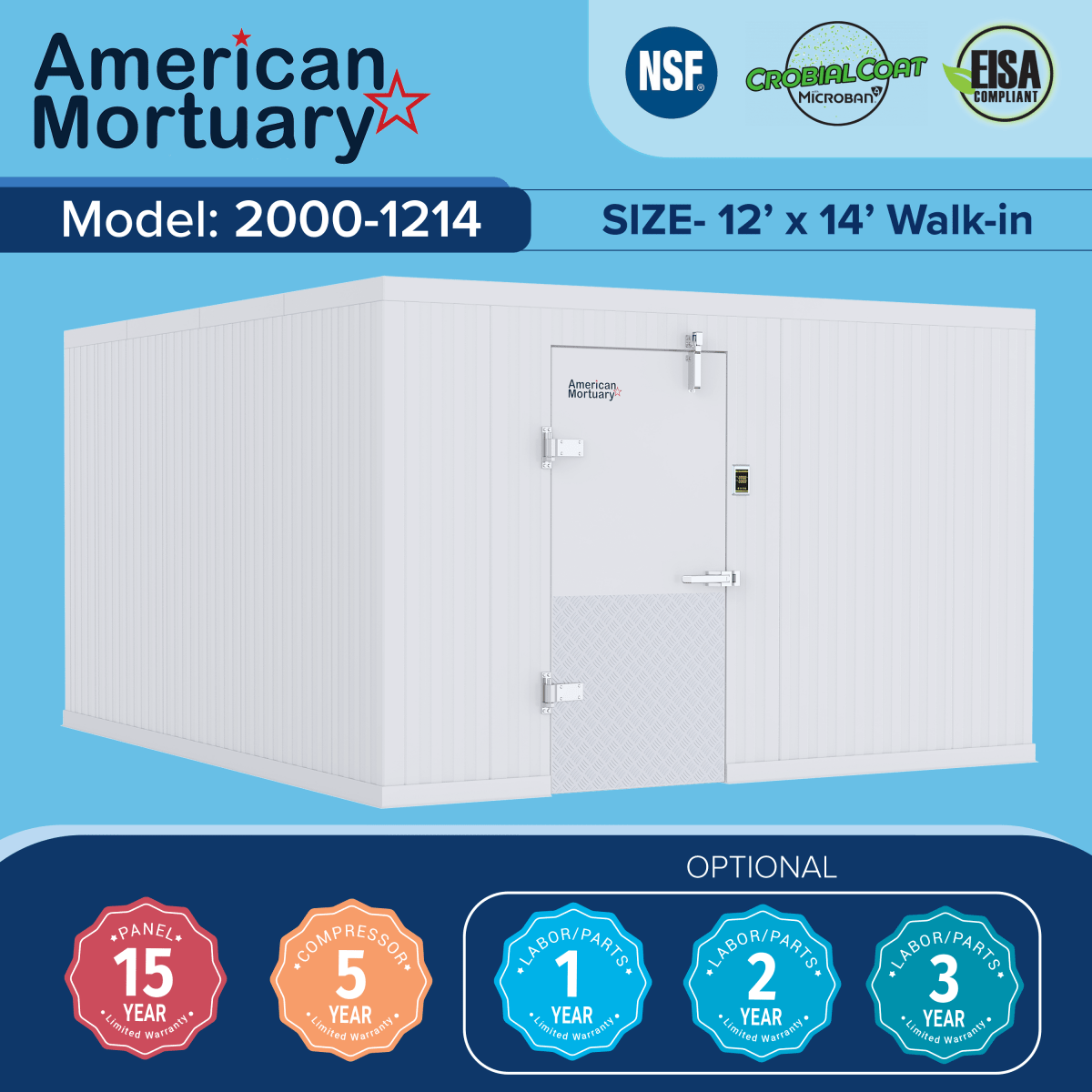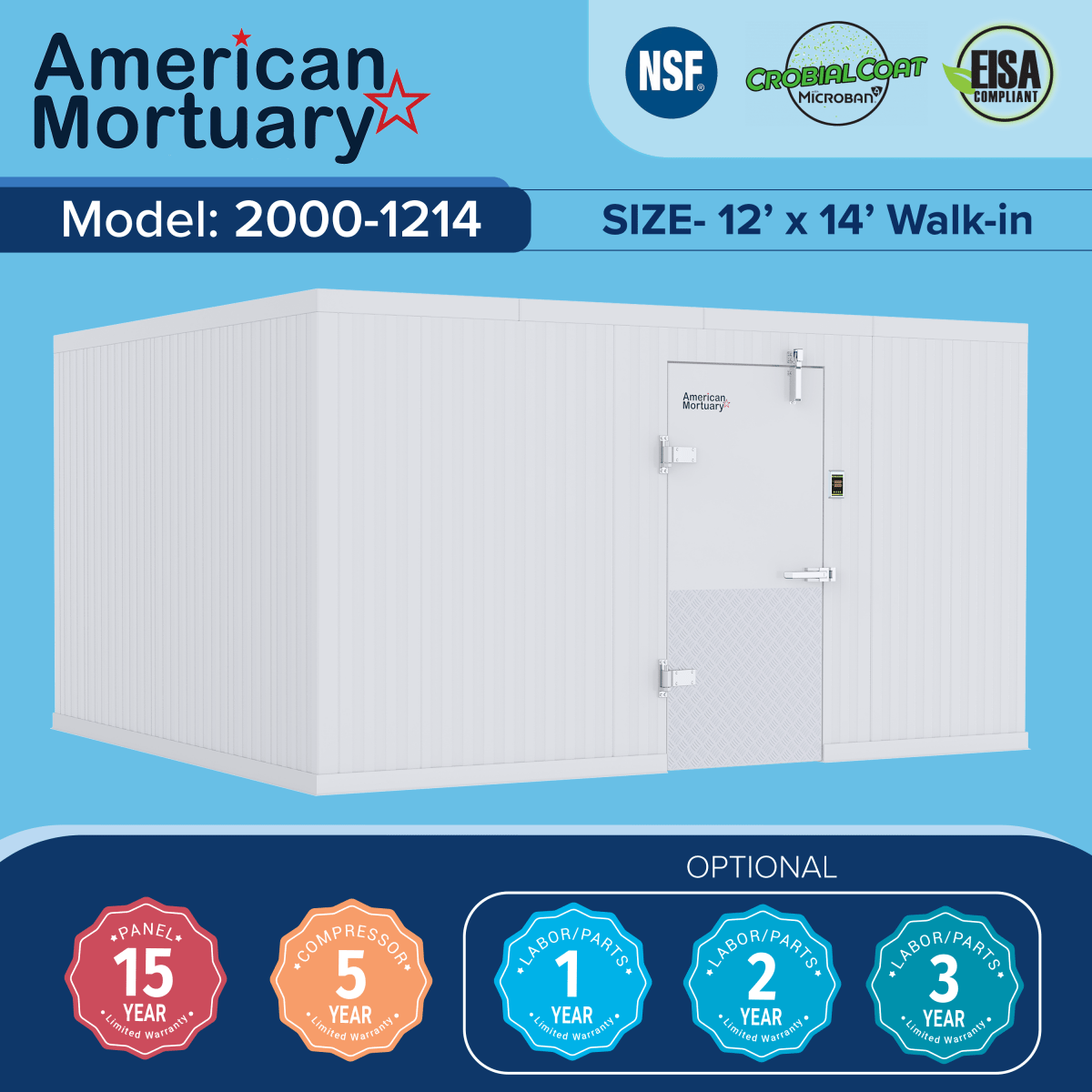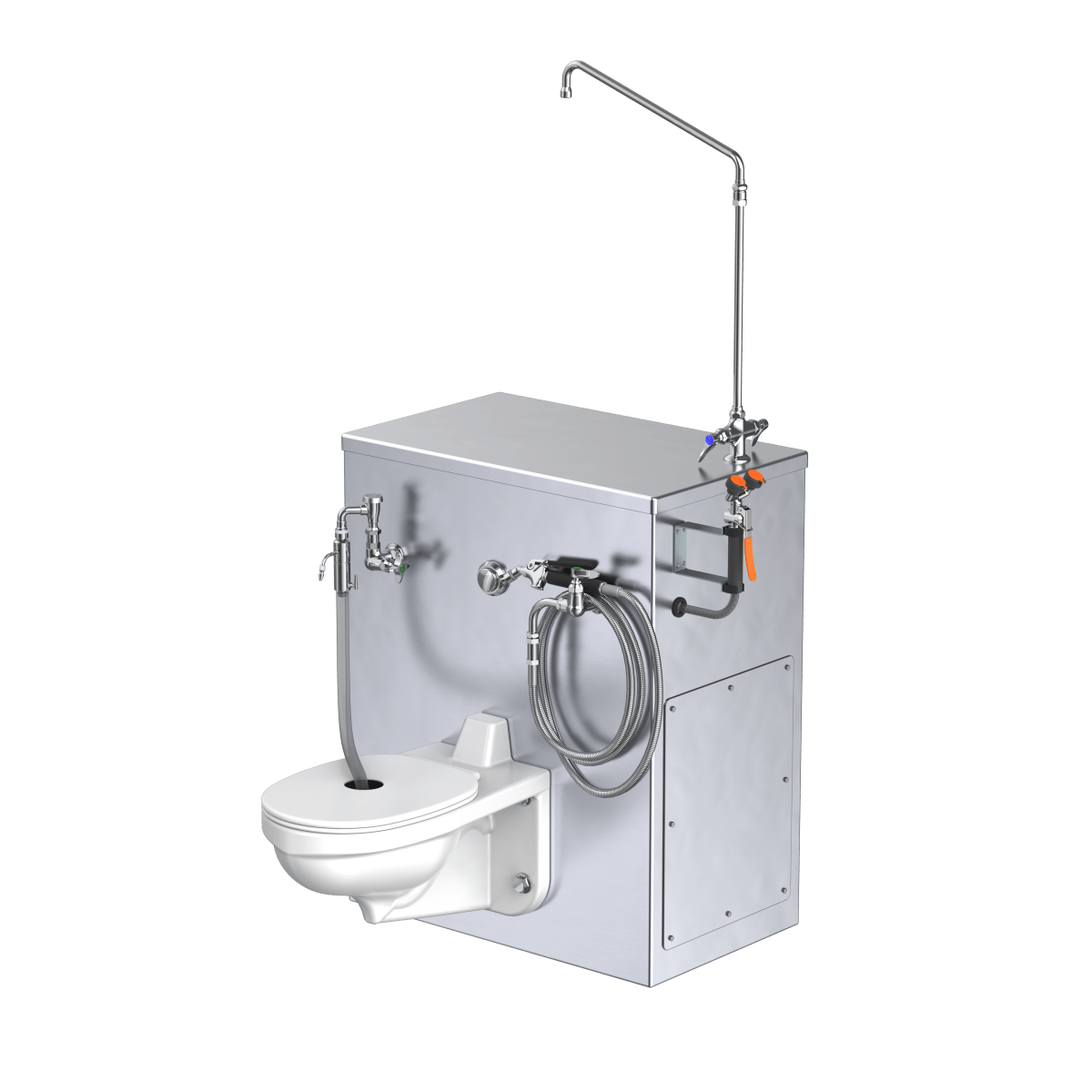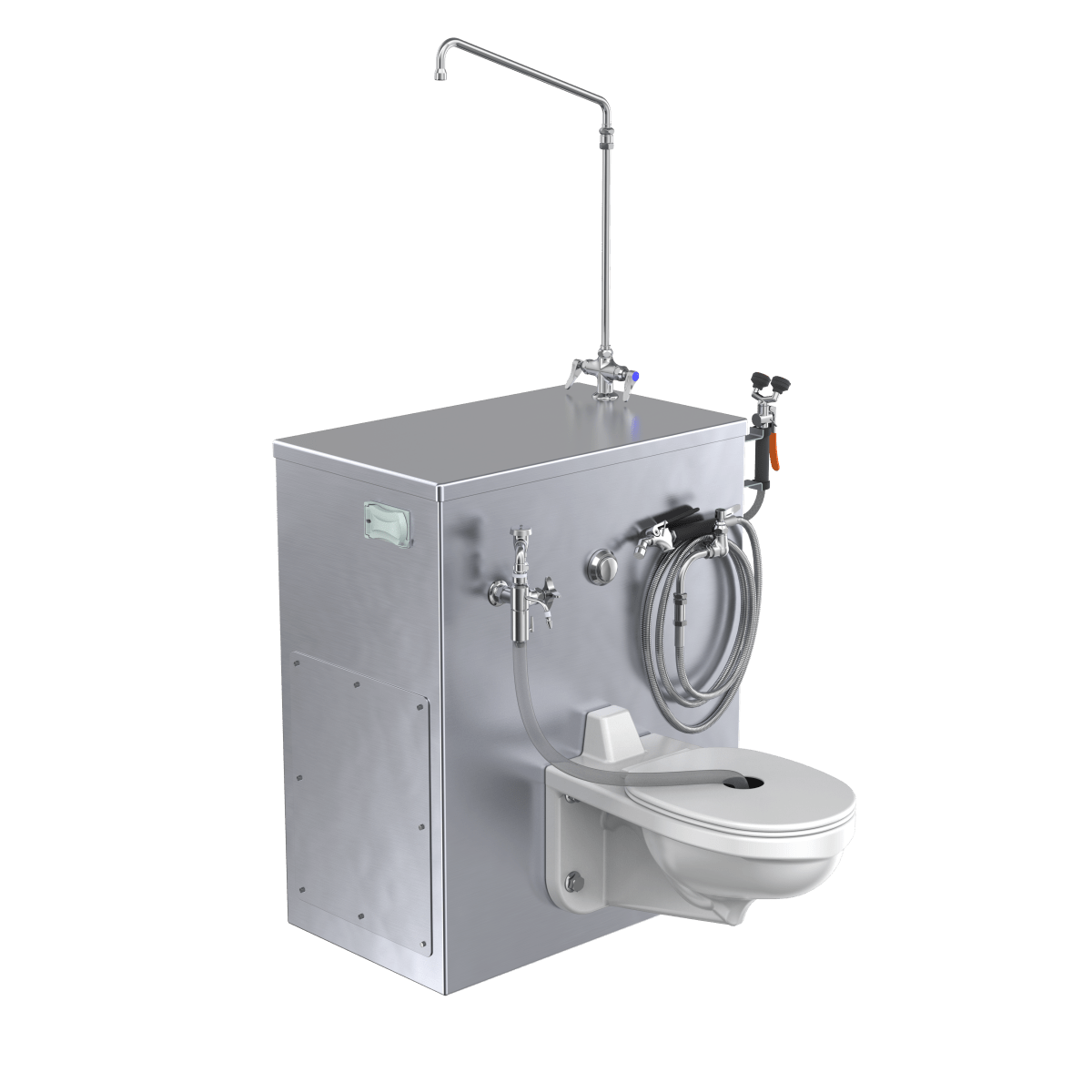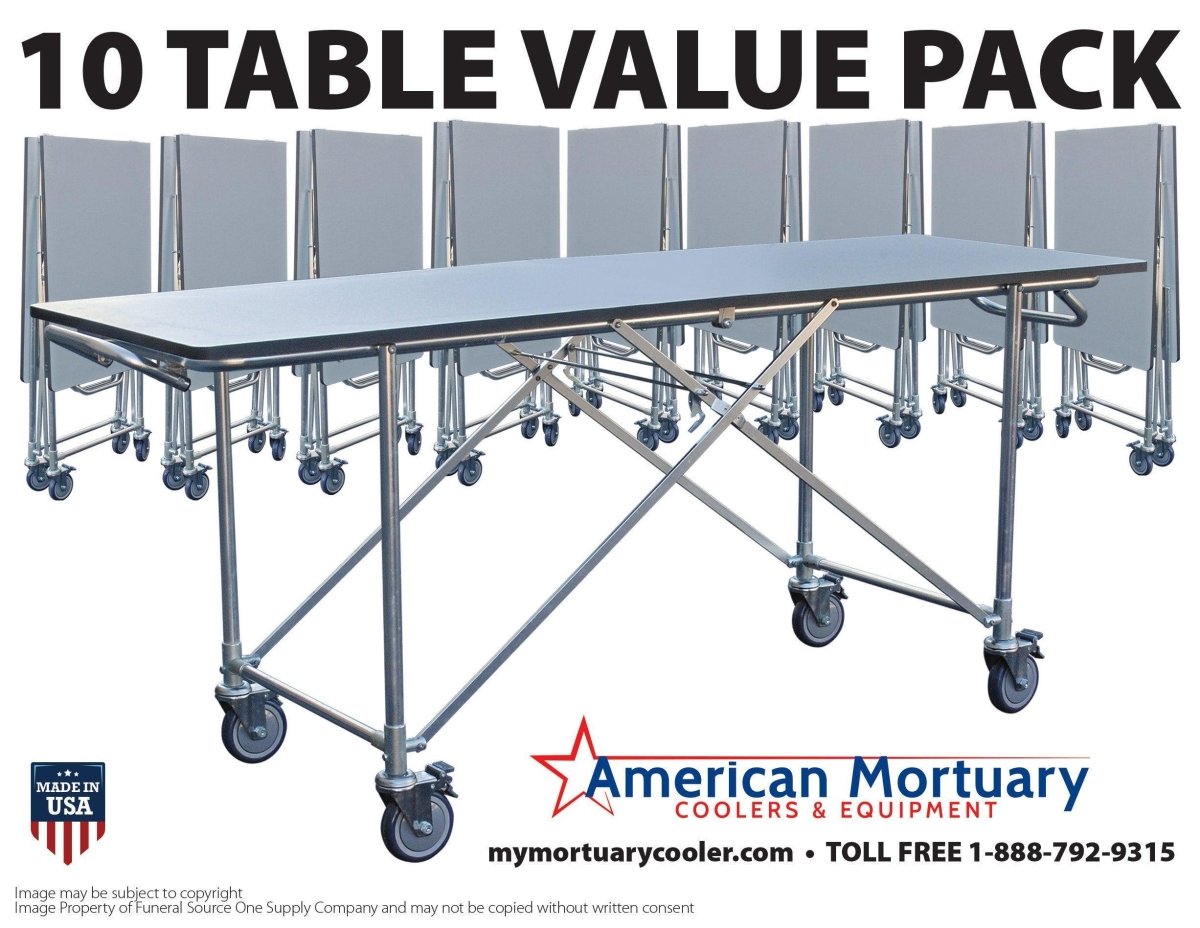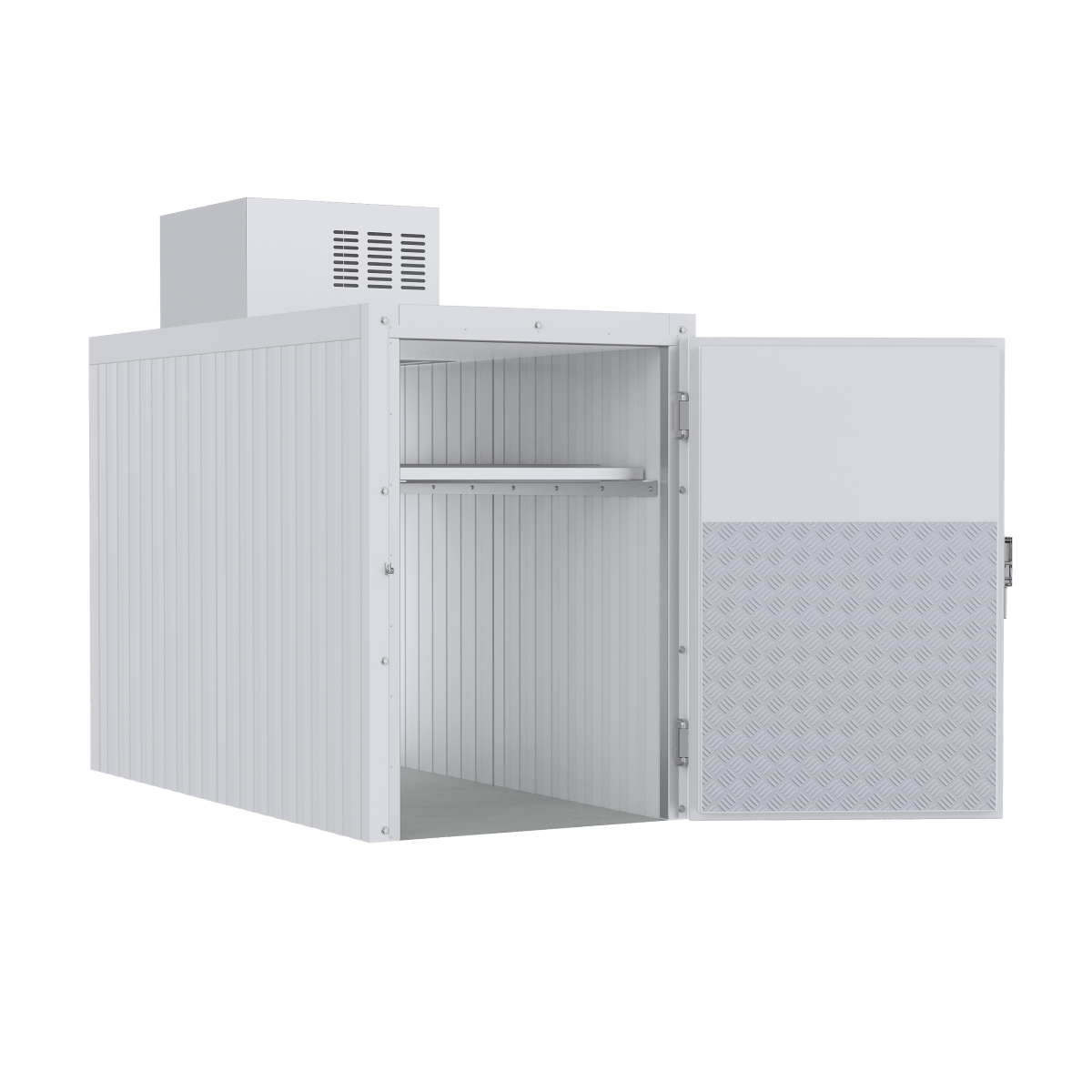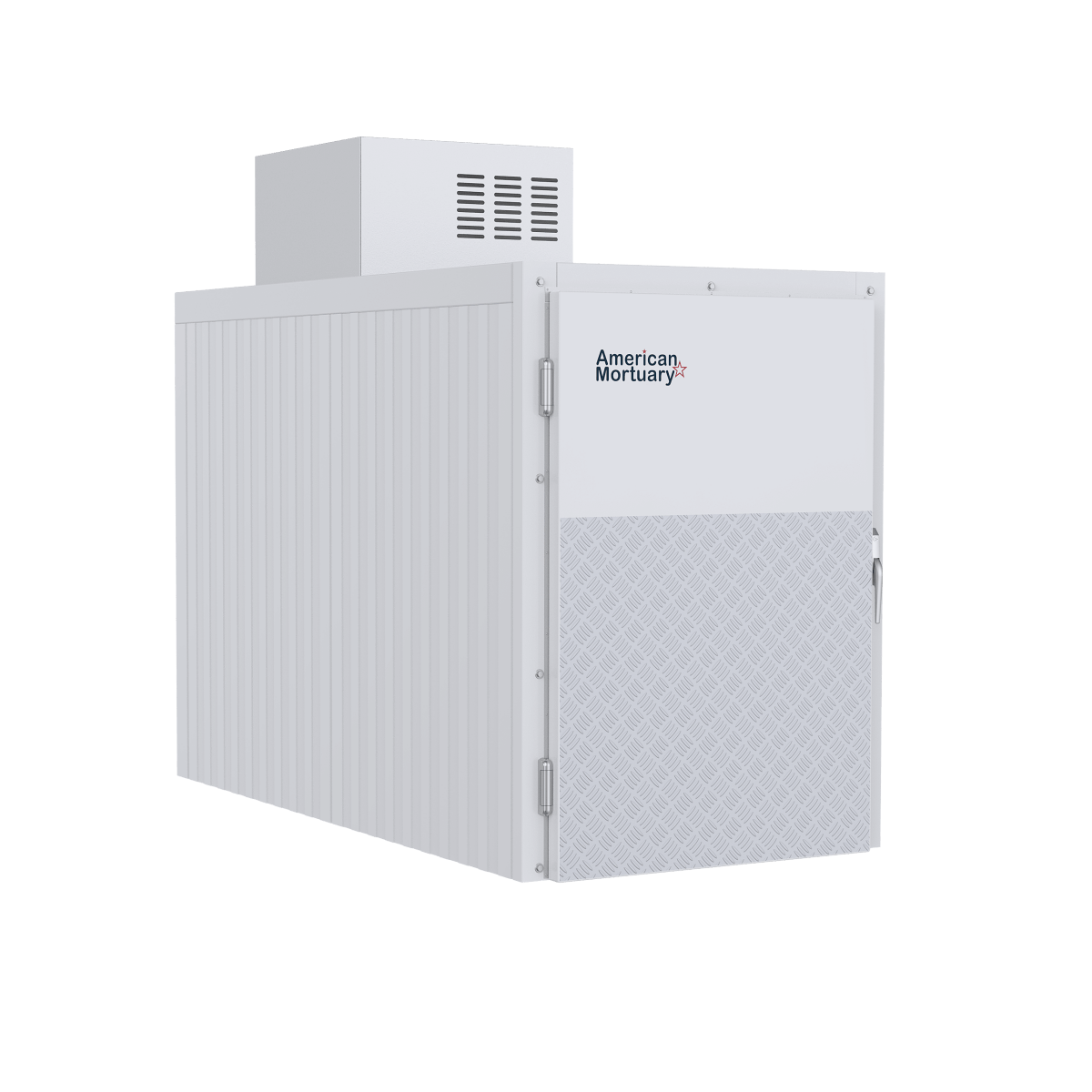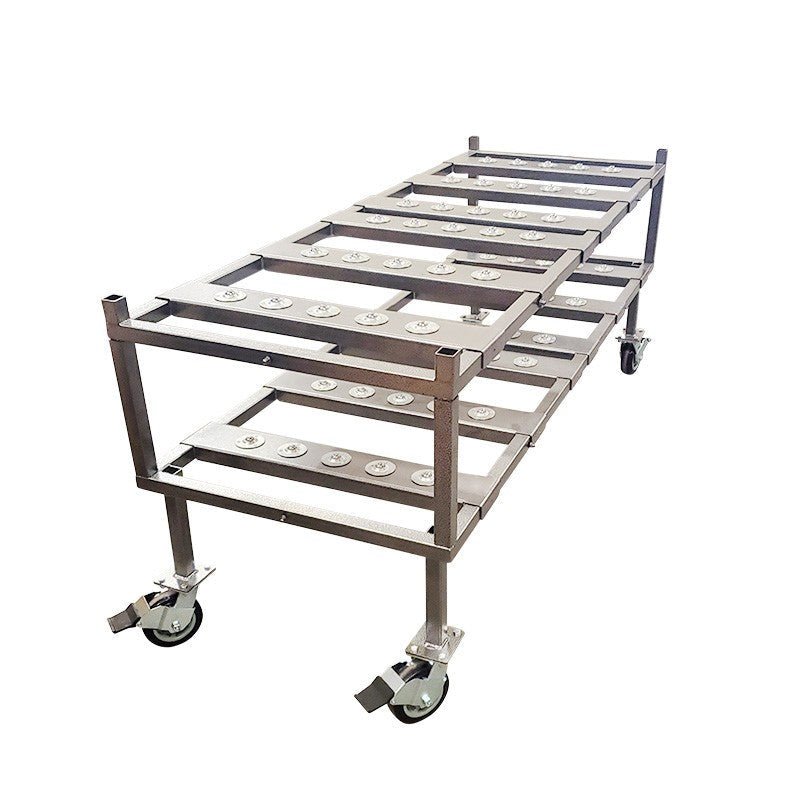Navigating the World of Mortuary Lifting Equipment
Ever watched funeral home staff smoothly transfer a loved one with seemingly effortless precision? Behind that dignified handling is likely a well-designed piece of equipment that makes all the difference.
Mortuary lifting trolleys are specialized tools that help funeral professionals, hospital staff, and morgue technicians safely transport the deceased with minimal physical strain. They're not just convenient—they're essential for preventing workplace injuries while maintaining the dignity of those in your care.
| Quick Facts: Mortuary Lifting Trolleys |
|---|
| Load Capacity: 150-300 kg (up to 454 kg for bariatric models) |
| Price Range: €600 (basic) to €5000 (advanced electric models) |
| Primary Types: Manual, Hydraulic, Electric, Scissor-lift |
| Key Features: Height adjustability (320-2030mm), stainless steel construction, braking systems |
| Benefits: Reduced staff injury, improved workflow efficiency, improved dignity in body handling |
Why are these specialized trolleys becoming must-have equipment? As funeral homes face stricter workplace safety regulations and growing staff shortages, the need for equipment that allows a single person to safely handle transfers has never been greater. Modern mortuary lifting trolleys range from simple manual models perfect for smaller facilities to sophisticated electric systems with digital weight displays and improved capabilities for larger individuals.
Choosing the right trolley isn't just about today's budget—it's about tomorrow's efficiency. When selecting equipment, think beyond the price tag to consider durability in a high-moisture environment, how easy maintenance will be, and whether it will work seamlessly with your existing coolers and storage systems. The perfect trolley fits your specific facility layout while meeting your particular weight requirements.
I'm with American Mortuary Coolers, and we've helped countless funeral directors nationwide find the perfect mortuary lifting trolleys to complement their refrigeration systems. We understand that the right equipment creates a complete, seamless body handling solution from arrival to final preparation.

If you're just getting familiar with mortuary lifting trolleys, you might come across several related terms in your research. A mortuary lift table typically refers to height-adjustable platforms, while a mortuary ceiling lift describes overhead track systems for transferring between surfaces. And don't overlook the importance of proper straps for mortuary lifts—they're essential for secure, dignified transfers.
Mortuary Lifting Trolleys: Definition, Types & Core Components
When it comes to the funeral industry, handling our departed loved ones requires both respect and practical safety measures. Mortuary lifting trolleys are the unsung heroes that make this possible, serving funeral homes, hospitals, and morgues nationwide with reliable body transport solutions.
Mortuary Lifting Trolleys Explained
Think of mortuary lifting trolleys as specialized transport equipment designed with a singular purpose - the safe, dignified movement of the deceased. Unlike regular hospital stretchers, these trolleys come equipped with clever lifting mechanisms (most commonly scissor-lifts) that allow for smooth height adjustments.
This vertical movement is a game-changer when transferring a body from your removal vehicle to a preparation table, or from that table into one of your mortuary cooler racks. The best models feature roller systems on their platforms so you can slide body trays horizontally without any manual lifting - combining both vertical and horizontal transfer in one practical package.
As one mortuary manager put it: "The handling aids are fantastic when moving patients - whether large or small; lightweight and extremely easy to use... a great improvement on the old style nightmare slides."
Primary Purpose of Mortuary Lifting Trolleys
Mortuary lifting trolleys do more than just move bodies from point A to point B. They serve several vital functions that benefit both your staff and your operations:
First and foremost, they prevent injuries by mechanizing the lifting process. This dramatically reduces the risk of back strains and other musculoskeletal injuries among your team, keeping you aligned with OSHA workplace safety guidelines.
They also boost efficiency by allowing a single staff member to safely manage transfers that might otherwise require two or three people. This operational streamlining is particularly valuable during busy periods or when working with limited personnel.
Perhaps most importantly, these trolleys preserve dignity through smooth, controlled movements that minimize unnecessary handling of the deceased. And as an added benefit, they support proper infection control by reducing direct contact - especially crucial in hospital settings.
Types at a Glance
The world of mortuary lifting trolleys offers several options to match your specific needs:
Manual hydraulic trolleys provide reliable lifting through foot pumps or hand cranks without needing electricity. They typically handle weights up to 200 kg and work perfectly for facilities with moderate case volumes.
Electric trolleys take the physical effort out of the equation with battery-powered motors driving hydraulic or actuator systems. With simple push-button operation, most models complete about 40 lift cycles per charge and support weights up to 250 kg.
For facilities regularly handling larger individuals, bariatric models like the HR250 series offer reinforced platforms supporting 250-454 kg, with wider dimensions and more powerful lift mechanisms.
Scissor-lift designs represent the most common mechanism type, delivering stable vertical movement through an expanding X-shaped support structure that's both reliable and precise.
And for smaller facilities with space constraints, foldable trolleys weighing under 20 kg can be collapsed for storage when not needed.

Key Components
Understanding what makes a quality mortuary lifting trolley helps you make smarter purchasing decisions:
The chassis forms the foundation, typically built from high-grade stainless steel (304 grade is standard) or powder-coated steel. Premium models feature mirror-finish welding that not only looks professional but improves hygiene and prevents corrosion.
The heart of any trolley is its lift mechanism - either hydraulic cylinders or electric actuators that provide smooth vertical movement. The best models include precision control valves that prevent jerky movements.
Don't overlook the importance of wheels and brakes - most quality trolleys feature 100 mm diameter wheels with precision bearings for easy rolling across various floor surfaces. Look for models with locking mechanisms on at least two wheels for stability during transfers.
For safety during transport, side rails (either removable or folding) prevent accidental sliding, while secure straps ensure body positioning remains stable, particularly important when navigating ramps or uneven surfaces.
The control systems range from simple foot pedals on manual models to sophisticated digital interfaces on premium electric versions, some even offering programmable height presets for consistent positioning.
Electric models typically run on battery systems (usually 24V) that provide enough power for a full day's operation on a single charge - perfect for busy facilities that can't afford downtime.
At American Mortuary Coolers, we understand how these trolleys integrate with your existing cooling systems to create a seamless workflow from arrival to final preparation.
Performance Specs, Safety & Accessories
When shopping for mortuary lifting trolleys, understanding the technical details makes all the difference between finding a perfect fit and ending up with equipment that falls short. Let's explore what makes these specialized tools tick.
Most standard mortuary lifting trolleys handle loads between 150-300 kg, with lift heights ranging from floor level (about 320 mm) up to table height (around 2030 mm). They're typically crafted from stainless 304 steel or feature powder-coated finishes that stand up to rigorous cleaning protocols. These workhorses are designed to function reliably in environments ranging from chilly morgue settings (-20°C) to warmer preparation rooms (+60°C).

| Trolley Type | Load Capacity | Lift Height Range | Power Source | Advantages | Limitations |
|---|---|---|---|---|---|
| Manual | 150-200 kg | 320-1800 mm | Human power (foot pump/hand crank) | Lower cost, no charging needed, simpler maintenance | Requires physical effort, slower operation |
| Hydraulic | 200-250 kg | 320-2000 mm | Hydraulic system with manual or electric pump | Smooth operation, reliable under load | Potential for fluid leaks, requires regular maintenance |
| Electric | 200-300 kg | 320-2030 mm | Battery-powered (24V) | Effortless operation, precise height control, programmable positions | Higher cost, requires charging, more complex maintenance |
| Bariatric | 250-454 kg | 320-1820 mm | Heavy-duty hydraulic or electric systems | Handles larger individuals safely | Significantly higher cost, heavier to maneuver |
Most models feature 100 mm diameter wheels for smooth movement across morgue and funeral home floors. For those wanting to dive deeper into lift systems, check out our detailed guide on mortuary lifts, cadaver lifts, and ceiling lifts. You might also find MedicalExpo's guide helpful for additional insights.
How Trolleys Boost Safety & Efficiency
"My back thanks me every day for investing in our electric trolley," shared one funeral director from Nashville. This sentiment echoes throughout the industry as proper equipment transforms daily operations.
Mortuary lifting trolleys dramatically reduce physical strain by enabling single-operator lifts that previously required two or three staff members. This means fewer pulled muscles, less fatigue, and happier employees. The ergonomic benefits are substantial - especially considering that manual lifting of deceased individuals is one of the leading causes of workplace injuries in funeral homes.
Electric models typically deliver about 40 complete lift cycles per battery charge - plenty for a full day's work without interruption. The smooth, controlled movements also preserve the dignity of the deceased during transfers, something families may not see directly but that reflects your commitment to respectful care.
The stainless steel construction makes infection control simpler too. Unlike fabric stretchers or older equipment with hard-to-clean crevices, modern trolleys can be thoroughly disinfected between uses - an increasingly important consideration in today's health-conscious environment.
Bariatric & Oversized Solutions
As America's population changes, funeral homes increasingly need equipment that can safely accommodate larger individuals. That's where specialized bariatric mortuary lifting trolleys come in.
Models like the HR250 series offer robust load capacities ranging from 250 kg up to 454 kg (1,000 lbs). These aren't just standard trolleys with higher weight ratings - they're completely re-engineered with wider frames, reinforced lifting mechanisms, and more powerful actuators or hydraulic systems.
"We were hesitant about the higher price tag at first," admitted a funeral director from our Memphis service area, "but the first time we needed to handle a 350-pound case without calling in extra staff, we knew it was worth every penny."
When considering bariatric options, your trolley needs to work seamlessly with your cooling systems. At American Mortuary Coolers, we ensure our oversized refrigeration units are designed with compatible door openings and internal clearances to accommodate bariatric lifting equipment.
The investment in proper bariatric handling equipment isn't just about avoiding potential staff injuries (though that alone often justifies the cost). It's also about being prepared to serve every family in your community with the same level of dignity and care, regardless of the physical characteristics of their loved one.
How to Choose the Right Mortuary Lifting Trolley (Buyer's Guide)
Selecting the perfect mortuary lifting trolley is a bit like finding the right vehicle – it needs to match your specific needs, work reliably, and provide value for your investment. Let's walk through the key considerations to help you make a choice you'll be happy with for years to come.
Critical Selection Factors
The journey to finding your ideal mortuary lifting trolley starts with understanding your facility's unique requirements.
First, take a good look at your facility layout. Those sleek trolleys might look perfect in the catalog, but will they actually fit through your doorways? Can they steer your hallway corners? Do you have adequate storage space when they're not in use? For tighter spaces, those lightweight foldable trolleys (under 20 kg) can be a blessing, though they typically handle less weight.
Your lift height needs matter tremendously. Most trolleys offer height ranges from 320 mm at their lowest to around 2,030 mm fully extended. Think about where you'll be transferring bodies from and to – your removal vehicles, preparation tables, and mortuary cooler compartments all sit at different heights.
As Muhammad Shakeel Butt, who recently equipped his facility, shared with us: "Being guided at every stage of the whole process" by knowledgeable suppliers made all the difference in finding equipment that truly worked for his team's needs.
Power systems present important tradeoffs. Manual systems with foot pumps or hand cranks never need charging and work reliably, but they do require physical effort from your staff. Hydraulic systems offer smoother operation but need regular maintenance checks. Electric systems provide effortless push-button operation but depend on keeping batteries charged – though most quality 24V systems deliver about 40 lift cycles per charge, enough for a typical busy day.
Don't overlook the wheels! Those standard 100 mm diameter wheels need to match your facility's flooring. Smooth hospital-style floors? No problem. Outdoor use or uneven surfaces? You might need larger, more robust wheels. And always check that at least two wheels have proper locks – the last thing you want is movement during a transfer.
Compatibility with your existing equipment is crucial. Your new trolley should work seamlessly with your body trays, transfer boards, mortuary cooler compartments, and preparation tables. At American Mortuary Coolers, we specifically design our systems to work together, eliminating those frustrating compatibility headaches.

Cost Drivers & ROI
Understanding what drives the price of mortuary lifting trolleys helps you make a smarter investment decision and recognize the true value beyond the price tag.
The price range is significant – from basic models starting around €600 ($700) to sophisticated electric systems reaching €5,000 ($5,800) or more. This wide range reflects real differences in materials, mechanisms, and features. Higher-end models typically offer stainless steel with better finishes, more sophisticated lift mechanisms, higher load capacities (especially important for bariatric cases), and helpful features like digital displays or programmable settings.
Material quality dramatically affects both price and longevity. Most professional-grade trolleys use 304 stainless steel, offering good corrosion resistance for typical mortuary environments. Premium models might use 316 grade steel with superior chemical resistance – worth considering if your disinfection protocols are particularly rigorous. Budget-friendly powder-coated options exist but typically won't stand up to daily use for as many years.
When calculating the real value, look beyond the initial price tag. Quality trolleys typically serve reliably for 8-12 years. Factor in maintenance requirements, warranty coverage (usually 1-3 years), and most importantly, the potential reduction in workplace injuries. As one of our funeral director clients in Atlanta told us with a smile: "We initially balked at the price difference between basic and electric models, but the reduction in staff injuries and increased efficiency paid for the upgrade within the first year."
Don't forget about after-sale support. Even the best equipment occasionally needs service or parts. Is emergency support available? Can you easily get replacement parts? Are service technicians available in your region? At American Mortuary Coolers, we provide comprehensive support across our regional centers in Johnson City TN, Atlanta GA, Chicago IL, Columbia SC, Dallas TX, Los Angeles, New York NY, and Pittsburgh PA – ensuring help is never far away.
Making this decision carefully pays dividends in staff safety, operational efficiency, and long-term value. The right mortuary lifting trolley becomes an essential team member in your facility, working quietly but effectively day after day, year after year.
Maintenance, Integration, FAQs & Future Trends
Keeping your mortuary lifting trolley in top condition isn't just about extending its lifespan—it's about ensuring dignity in every transfer and safety for your staff. Let's explore how to maintain these vital tools and seamlessly integrate them into your existing systems.
Maintenance Requirements
I've spoken with countless funeral directors who finded (often the hard way) that consistent maintenance is the key to reliable performance. Your mortuary lifting trolley deserves routine care to serve you well when you need it most.
Cleaning and Disinfection Protocols should become second nature after each use. Hospital-grade disinfectants are your friends here, but be mindful with stainless steel models—avoid chlorine-based cleaners that can cause pitting over time. Pay special attention to those roller mechanisms and small crevices where biological materials might hide.
For Mechanical Maintenance, think of your trolley like a car that needs regular check-ups. If you have a hydraulic system, monthly fluid checks can prevent unexpected failures. Electric system users should maintain proper battery charging cycles—nothing worse than a trolley that won't lift midway through your day. Those wheels and casters? A quarterly lubrication keeps them rolling smoothly.
One funeral director in our Atlanta service area created a simple wall chart for his team: "Monday is inspection day—no exceptions." This simple habit has saved them from embarrassing (and potentially dangerous) equipment failures during services.
System Integration
A mortuary lifting trolley that doesn't play nice with your other equipment is like having mismatched puzzle pieces. The real magic happens when everything works together.
At American Mortuary Coolers, we design our refrigeration units with compatibility in mind. When your trolley's height range matches your cooler compartment heights, and doorway clearances accommodate trolley dimensions, the workflow becomes almost choreographed—smooth, respectful, and efficient.
The dream setup creates what we call the "single touch" workflow: the deceased moves from removal vehicle to preparation area to storage with minimal handling. This means unified tray systems that stay with the body, consistent height settings across your facility, and compatible roller systems for smooth transfers.
A funeral home owner in Dallas told me recently: "Since getting equipment that actually works together, we've cut our transfer time in half, and my staff's backs are thanking me." That's exactly what good integration should do.

Frequently Asked Questions about Mortuary Lifting Equipment
What routine maintenance keeps a trolley compliant?
Keeping your mortuary lifting trolley compliant isn't just about checking boxes—it's about peace of mind. Start each day with a quick check of the basics: brakes functioning on all locking wheels, no visible damage to the frame, and for electric models, sufficient battery charge.
Weekly, give your trolley a thorough cleaning and disinfection, paying special attention to those transfer rollers where residue can build up. Test any straps or securing mechanisms—they're often the first components to show wear.
Monthly maintenance should include lubricating moving parts according to what your manufacturer recommends. For hydraulic models, check fluid levels, and for electric versions, inspect those electrical connections.
Don't skip the annual professional inspection. Having certified technicians perform load testing and inspect structural components under stress isn't just good practice—it's often required for insurance and regulatory compliance.
As one of our Johnson City customers puts it: "The five minutes I spend checking our trolley each morning has saved us countless hours of potential downtime."
How do lifting trolleys interface with cold-room racking?
The dance between your mortuary lifting trolley and cold-room racking is all about alignment and clearance. Modern trolleys offer impressive lifting ranges (from 320mm to over 2,000mm) specifically designed to reach every level of multi-tier racking systems.
The most seamless setups feature roller systems allowing trays to slide directly from trolley to rack—no lifting required. Some advanced systems even include locking mechanisms that secure the trolley to the rack during transfers for added stability.
Don't overlook the space considerations. Your cold room needs sufficient maneuvering space, appropriate door dimensions, and smooth floor transitions to prevent jarring during transport.
One mortuary manager in Chicago shared: "We actually mapped out the trolley's path on the floor with tape during our cooler installation to make sure everything lined up perfectly." That's the level of integration planning that makes daily operations smooth.
Can one unit safely handle bariatric cases alone?
The honest answer? It depends. Standard mortuary lifting trolleys typically support 150-200 kg, while dedicated bariatric models like our HR250 can handle 250 kg. For facilities frequently serving larger communities, specialized heavy-duty units supporting up to 454 kg (1,000 lbs) are available.
But weight capacity is only part of the equation. Even with adequate capacity, a single operator may struggle with maneuvering. Wider bariatric trolleys sometimes face challenges navigating narrow doorways or tight corners in older facilities.
Most experienced funeral directors recommend a two-person approach for bariatric cases, even with mechanical assistance. This ensures dignified, controlled movement through the facility. Supplementary transfer aids like the BlueBoard (capacity up to 300 kg) or Recovery Cloth XL (up to 400 kg) can make a world of difference.
As one funeral director in our Pittsburgh service area noted with a smile: "Our bariatric trolley can handle the weight just fine, but doorways don't magically get wider when you need them to."
Future Trends in Mortuary Lifting Technology
The future of mortuary lifting trolleys is smarter, quieter, and more sustainable—and it's arriving faster than you might think.
Smart integration technologies are leading the way, with IoT-enabled trolleys that can track usage patterns and alert you when maintenance is needed. Imagine systems that automatically adjust to optimal heights when approaching specific workstations, or digital logging of transfers for quality assurance.
Ergonomic improvements are making these tools more respectful and easier to use. Ultra-quiet actuators operating below 45 decibels allow for more peaceful transfers, while intuitive control systems respond to minimal input, reducing operator fatigue.
On the sustainability front, we're seeing eco-friendly battery systems with dramatically longer life cycles and energy-efficient lifting mechanisms that require less power. These improvements not only reduce environmental impact but also lower operating costs.

At American Mortuary Coolers, we're particularly excited about how these trolley advancements will integrate with our next-generation cooling systems. We believe the future isn't just about better individual pieces of equipment—it's about creating holistic systems that work together seamlessly to provide dignified and efficient deceased care.
After all, as we often remind our customers across all 48 contiguous states we serve: the right equipment doesn't just make your job easier—it helps you provide the respectful care that every family deserves in their time of need.
Conclusion & Next Steps
Choosing the right mortuary lifting trolley is truly an investment in both your staff's wellbeing and your facility's operational efficiency. Throughout this guide, we've walked through everything from basic manual models to sophisticated electric systems, each offering unique benefits depending on your specific needs.
Key Takeaways
When you select the right mortuary lifting trolley, you're not just buying equipment—you're changing how your facility operates. Modern trolleys dramatically reduce staff injury risk while ensuring the deceased are handled with the dignity they deserve through smooth, controlled transfers.
The perfect trolley can revolutionize your daily workflow. Imagine enabling a single staff member to safely manage transfers that once required multiple people, all while integrating seamlessly with your existing mortuary coolers and preparation areas.
Today's market offers remarkable customization options. Need to accommodate larger individuals? Specialized bariatric models supporting up to 454 kg have you covered. Working in a space-constrained facility? Compact foldable units might be your perfect solution.
While initial costs range from about €600 for basic models to €5,000+ for advanced electric systems, the true value becomes clear when you consider the reduced workplace injuries, improved workflow efficiency, and extended equipment lifespan that comes with proper maintenance.
Making Your Decision
When evaluating mortuary lifting trolleys for your facility, I recommend this thoughtful approach:
Start by honestly assessing your specific needs. Consider your typical case volume and weight requirements. Look at your facility layout and any space constraints you face. Think about how new equipment will integrate with what you already have, and be realistic about your staff's training needs.
Don't just focus on the sticker price. The initial purchase is just one part of your investment. Factor in expected maintenance costs over time, potential savings from fewer staff injuries, and the projected lifespan based on construction quality. Sometimes spending a bit more upfront saves significantly in the long run.
Finally, consider future adaptability. Our industry is changing—bariatric cases are increasing, facilities undergo renovations, and regulatory requirements evolve. The right equipment should serve you well not just today, but for years to come.

How American Mortuary Coolers Can Help
Here at American Mortuary Coolers, we understand that mortuary lifting trolleys are just one piece of a comprehensive body handling system. Our expertise goes beyond just refrigeration—we help clients create integrated solutions where everything works together beautifully.
We love getting to know your specific facility needs. Our team can visit your location, understand your workflow challenges, and recommend trolley options that integrate perfectly with our custom mortuary coolers. It's about creating a solution custom to you, not just selling equipment.
With service centers across the continental United States—including Johnson City TN, Atlanta GA, Chicago IL, Columbia SC, Dallas TX, Los Angeles, New York NY, and Pittsburgh PA—we're never far away when you need support. When you purchase equipment from us, you're getting a partner, not just a product.
We consider your complete workflow, from first call removals through final preparation. This holistic approach ensures all your equipment works together efficiently, creating a seamless experience for your staff and ultimately the families you serve.
We understand budget constraints can be challenging, which is why we offer flexible purchasing solutions. We believe no facility should have to compromise on quality due to temporary financial limitations.
The right mortuary lifting trolley transforms your operation through improved safety, efficiency, and dignity in handling. I'd love to chat about how we can help you select the perfect lifting solution to complement your mortuary refrigeration systems.
More information about our refrigeration systems is available on our website, or reach out directly to begin creating your customized mortuary handling solution. We're here to help make your job easier and your facility more efficient.


